
Caterpillars are the larval stage of members of the order Lepidoptera.

The geometer moths are moths belonging to the family Geometridae of the insect order Lepidoptera, the moths and butterflies. Their scientific name derives from the Ancient Greek geo γεω, and metron μέτρον "measure" in reference to the way their larvae, or inchworms, appear to measure the earth as they move along in a looping fashion. A very large family, it has around 23,000 species of moths described, and over 1400 species from six subfamilies indigenous to North America alone. A well-known member is the peppered moth, Biston betularia, which has been subject of numerous studies in population genetics. Several other geometer moths are notorious pests.

Pieris rapae is a small- to medium-sized butterfly species of the whites-and-yellows family Pieridae. It is known in Europe as the small white, in North America as the cabbage white or cabbage butterfly, on several continents as the small cabbage white, and in New Zealand as the white butterfly. The butterfly is recognizable by its white color with small black dots on its wings, and it can be distinguished from P. brassicae by its larger size and the black band at the tip of its forewings.

The Very Hungry Caterpillar is a 1969 children's picture book designed, illustrated, and written by American children's author and illustrator Eric Carle. The plot follows a very hungry caterpillar that eats a variety of foods before pupating and emerging as a butterfly, and incorporates elements that contribute to juvenile education, such as counting, the days of the week, food, and a butterfly’s life cycle.

The purple thorn is a moth of the family Geometridae. The species was first described by Johann Siegfried Hufnagel in 1767. It is a species of northern and central Europe. It has a scattered distribution in Britain but is absent from Ireland.

Manduca quinquemaculata, the five-spotted hawkmoth, is a brown and gray hawk moth of the family Sphingidae. The caterpillar, often referred to as the tomato hornworm, can be a major pest in gardens; they get their name from a dark projection on their posterior end and their use of tomatoes as host plants. Tomato hornworms are closely related to the tobacco hornworm Manduca sexta. This confusion arises because caterpillars of both species have similar morphologies and feed on the foliage of various plants from the family Solanaceae, so either species can be found on tobacco or tomato leaves. Because of this, the plant on which the caterpillar is found does not indicate its species.

Arthur and the Invisibles or Arthur and the Minimoys is a 2006 English-language French fantasy adventure comedy animated/live-action film directed and co-written by French filmmaker Luc Besson. It is based on the first two books of the Arthur children's books series, Arthur and the Minimoys and Arthur and the Forbidden City, by Besson.

Hasora chromus, the common banded awl, is a butterfly belonging to the family Hesperiidae which is found in the Indian subcontinent, Southeast Asia and Australia.

Papilio aegeus, the orchard swallowtail butterfly or large citrus butterfly is a species of butterfly from the family Papilionidae, that is found in eastern Australia and Papua New Guinea.
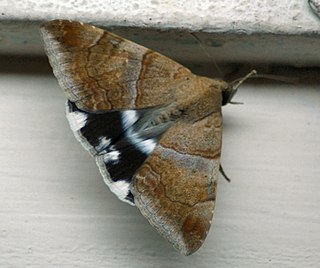
Achaea janata, the castor semi-looper or croton caterpillar, is an erebid moth, the caterpillars of which are termed 'semi-loopers' due to their mode of locomotion. It is found from the Indo-Australian tropics and subtropics, extending south to New Zealand and east through the Pacific archipelagoes to Easter Island. It is a major pest of castor throughout the world.

Selenia lunularia, the lunar thorn, is a moth of the family Geometridae. It is found in Europe except Iberia and Greece; also in Asia Minor, Armenia, SiberiaIssyk-Kul.

Hyles livornica, the striped hawk-moth, is a moth of the family Sphingidae.
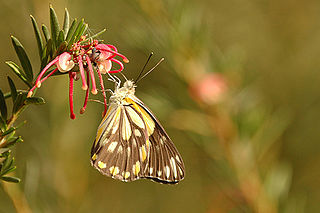
Belenois java, the caper white or common white, is a small butterfly of the family Pieridae found in Australia, Indonesia, and Melanesia. It is highly migratory and is often confused with the cabbage white.
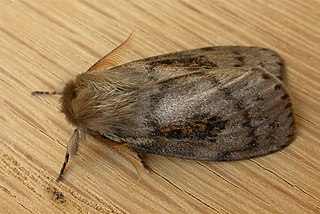
Leptocneria reducta, the white cedar moth, is a moth of the subfamily Lymantriinae. The species was first described by Francis Walker in 1855. It is found in all of Australia, except Tasmania.

Anthela nicothoe, the urticating anthelid, is a moth of the family Anthelidae.
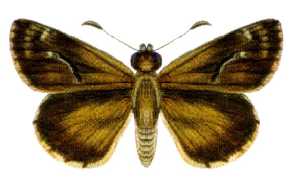
Anisynta dominula, the two-brand grass-skipper or dominula skipper, is a species of butterfly in the family Hesperiidae. It is found in Australia in the mountains of New South Wales, Tasmania and Victoria.
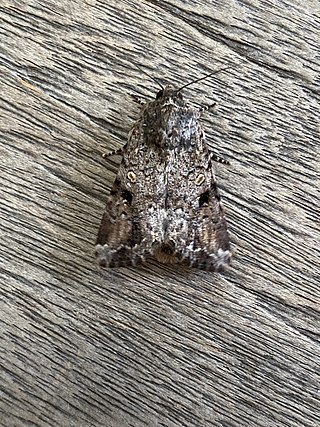
Spodoptera mauritia, the lawn armyworm or paddy swarming caterpillar, is a moth of the family Noctuidae. The species was first described by Jean Baptiste Boisduval in 1833. Able to eat many types of food, it is a major pest throughout the world.

Selenia Iacchelli is a Canadian soccer player who played as a midfielder.


















